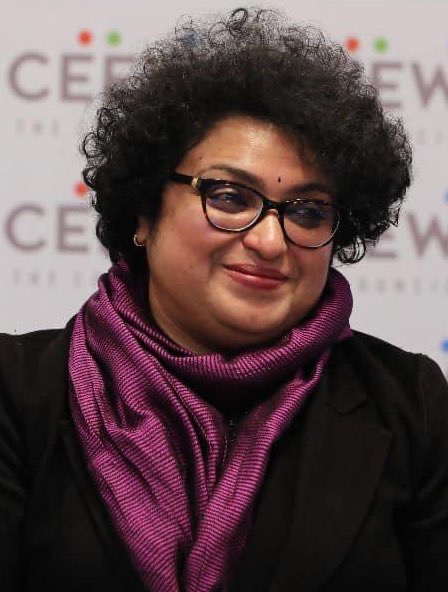The 2025 Sveriges Riksbank Prize in Economic Sciences in Memory of Alfred Nobel goes to Joel Mokyr, the economic historian of Industrial Revolution; and Philippe Aghion and Peter Howitt for their theoretical models on Schumpeterian “innovation-driven economic growth”.
The Nobel laureates’ work reminds that economic growth cannot be taken for granted. Economic growth is not about something happening as ad hoc configuration of 1-2 per cent annually. It is important to analyse the scope of “creative destruction”, to avoid middle income traps, crisis and economic shocks. In that sense, as beautifully put by one of the Nobel committee members, the Nobel laureates tackle “one of the largest questions in social sciences” – by identifying the potential of “creating disruption” in creating sustained growth.
To put the matter in perspective, economist Joseph Schumpeter described innovation as "creative destruction" – a process where new ideas and inventions disrupt and replace existing economic structures, driving economic growth. Innovation is a broader term than just invention per se. It is an all-encompassing narrative of how an invention or an idea is transformed culturally and intellectually, creating value to the economic growth processes. The three economists have been honoured for their groundbreaking work in this Schumpeterian school of thought, on how technological progress and “creative destruction” shape our economic growth.
Looking closer, Joel Mokyr, the economic historian from Northwestern University, has won Nobel “for having identified the prerequisites for sustained growth through technological progress”. Mokyr’s scholarship, particularly evident in his acclaimed 2016 book A Culture of Growth: The Origins of the Modern Economy, which unravels the historical threads connecting industrialisation, innovation, and economic expansion. By examining the epoch between 1750 and 1914, Mokyr explains how societies transitioned from prolonged stagnation to sustained economic progress. His insights underscore a vital truth: for innovations to catalyse enduring growth, societies not only just do inventions, but also marvel in scientific temper and engage in an openness to change. Before the Industrial Revolution, there was a gap in theoretical literature for why inventions per se was not just enough for development. This gap, Mokyr’s work masterfully bridges.
Peter Howitt (Brown University) and Philippe Aghion (affiliated with Collège de France, INSEAD, and the London School of Economics) studied the mechanisms behind sustained growth, in an article in 1992, where they constructed a mathematical model for what is called creative destruction. It is a no brainer that when a new and better product enters the market, the companies selling the older products lose out. The innovation represents something new and is thus “creative”. However, it is also “destructive”, as the company whose technology becomes passé is driven out of markets.
Published post covid, in 2021, Philippe Aghion, in his work, The Power of Creative Destruction, co-authored with Céline Antonin and Simon Bunel, elucidates the interplay between “creative disruption” and growth. With lucidity and empirical rigour, they explain how innovation drives prosperity under capitalism, amid crises, inequality, and climate change crisis. Their work is a clarion call for radical overhaul for a better capitalism, through not just a revolution, but through harnessing "creative destruction". For them, “creative destruction” is the mantra to overcome secular stagnation, middle-income traps, climate change crisis, pandemic crisis and any economic shocks. The fundamental difference in their thought process from the orthodox neoclassical economists is their emphasis on “growth with equity”, taking into consideration about the inequalities and climate change.
Interestingly, the dynamics of innovation highlighted by these laureates also resonate in contemporary global rankings of innovation ecosystems. The Global Innovation Index (GII) 2025, released by the World Intellectual Property Organisation, reveals Switzerland as the world's most innovative economy, followed by Sweden, the United States, South Korea, and Singapore. Meanwhile, India ranks 38th, showcasing a notable rise in its innovation capabilities – particularly in knowledge economy and market sophistication. To translate innovation into economic growth requires right institutions, human capital and research, infrastructure, and business sophistication.
To conclude, 2025 Nobel laureates weave a profound narrative -while Joel Mokyr unearths the historical underpinnings nurturing technological progress, Philippe Aghion and Peter Howitt led the theoretical edifice of creative destruction analysing the modern capitalism. Congratulations to Joel Mokyr, Philippe Aghion, and Peter Howitt – the architects of innovation-driven growth, whose works will shape economic thought for generations to come, especially in the context of Artificial Intelligence (AI) and climate change crisis.
This article was first published in Manorama, on October 14th 2025.

Lekha Chakraborty is Professor, NIPFP and Research Associate of Levy Economics Institute of Bard College, New York and Member, Governing Board of International Institute of Public Finance (IIPF) Munich.
The views expressed in the post are those of the authors only. No responsibility for them should be attributed to NIPFP.
